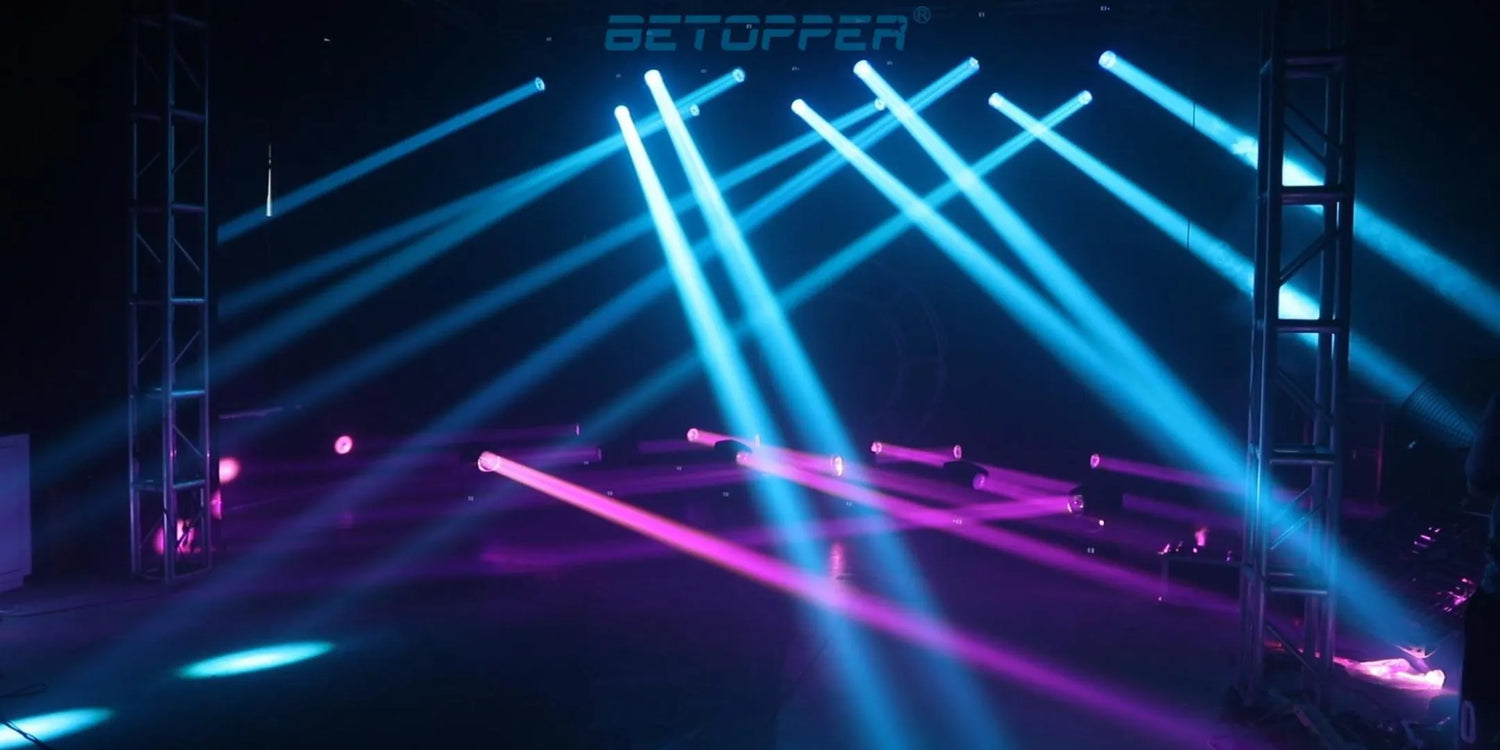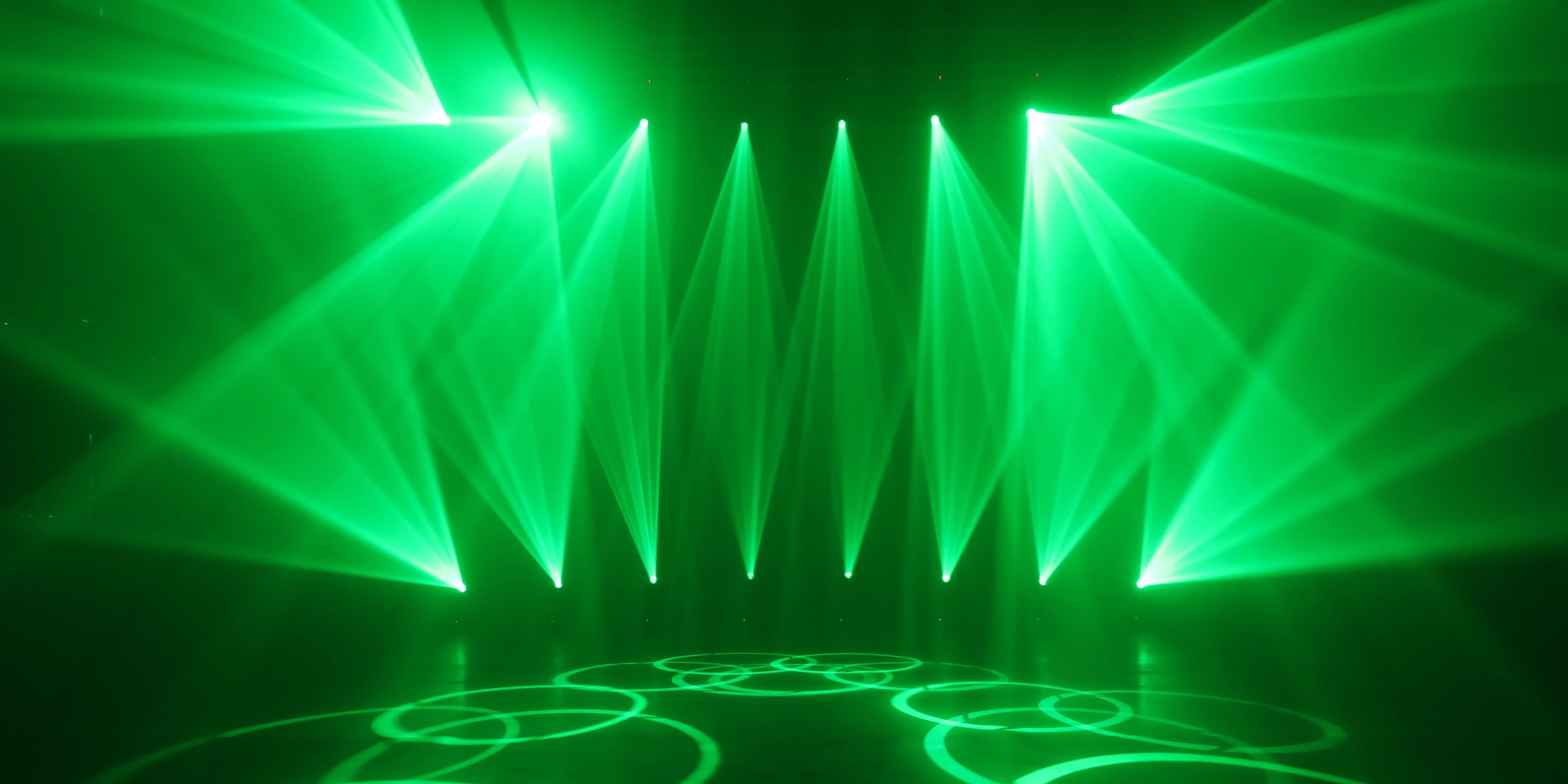Introduction
When it comes to professional stage lighting, brightness isn’t just about how powerful a fixture looks — it’s about understanding how light is measured and perceived.
Three key terms define how light behaves in performance environments: Lumen, Lux, and PAR.
Although they’re often used interchangeably, they represent very different aspects of brightness and visual quality.
In this guide, you’ll learn the real difference between them — and how to use this knowledge to choose the right fixture for your stage, event, or production setup.
Lumen — Total Light Output
What it means:
Lumen (lm) measures the total light emitted from a fixture in all directions.
It represents how much visible light the fixture produces overall — like the “horsepower” of lighting.
Why it matters:
- Higher lumens = brighter total output
- Useful for comparing fixture power
- Doesn’t consider beam shape or distance
Example:
Lumen count alone doesn’t determine how bright a light looks on stage.
A PAR light rated at 10,000 lumens technically emits more light than one rated at 5,000 lumens, but if the 5,000 lm fixture has a narrower beam or tighter optics, it can actually appear brighter to the audience.
That’s because lumens measure total output — while optics decide where and how that light lands.
The Betopper LC500 4x100w Amber/CW High CRI COB Blinder Light perfectly illustrates this.
Powered by True 400W COB LEDs, it delivers over 13,000 lumens of focused, high-efficiency brightness that cuts cleanly through the stage. With CRI 95+ accuracy, it reproduces natural color and texture on faces, fabrics, and instruments — making it ideal for concerts, studios, and live events where intensity and realism matter.

Lux — Illuminance and Perceived Brightness
What it means:
Lux (lx) measures how much light actually lands on a surface — in other words, it’s luminous intensity per unit area.
While lumens tell you how much light a fixture produces in total, lux tells you how bright that light looks where it hits.
Why it matters:
- Determines how well a performer or object is illuminated
- Helps balance brightness across stage zones
- Crucial for photography, film, and live streaming where exposure matters
Example:
Imagine shining a flashlight on a wall.
If you move closer, the light becomes more concentrated — lux increases.
Move farther away, and the same flashlight suddenly looks dimmer — lux decreases.
This is the inverse square law in action:
When the distance between the light and subject doubles, the illuminance (lux) drops to one quarter.
That’s why fixture placement and beam angle are just as important as output power.
On stage, high-lux lighting is used for spot effects, while lower lux levels are better for washes and ambience. Even a lower-lumen fixture can appear “brighter” if it focuses its light into a tighter area with higher lux density.
Things to keep in mind:
- Lux decreases rapidly with distance — keep fixtures as close as practical for key light.
- Wide beam angles reduce lux but increase coverage.
- Always test lux values with a meter when designing balanced stage lighting.
PAR — Light Spectrum and Useful Output
What it means:
PAR (Photosynthetically Active Radiation) originally comes from horticultural lighting, but in stage and architectural lighting, it’s often used to describe how much of the emitted light spectrum is actually useful or visible to the human eye.
In simple terms, while lumen measures quantity of light, and lux measures light intensity on a surface, PAR focuses on the quality and effectiveness of that light spectrum — how well it reproduces color, contrast, and realism.
Why it matters:
- Defines how balanced your light spectrum is (especially across RGB, amber, and white)
- Determines how accurately colors are rendered on stage and on camera
- Affects how the audience perceives brightness and mood
Example:
Two fixtures may have the same lumen rating, but if one uses a full-spectrum LED system (RGBLA+UV) and the other relies only on RGB, the first will produce richer colors, deeper whites, and more natural blends. That’s because PAR considers usable spectral energy, not just brightness.
In stage environments, this means:
– Red tones look fuller and warmer
– Skin tones stay true under white balance
– Ambient color transitions appear smoother and more cinematic
Things to keep in mind:
- High PAR values often correlate with higher color accuracy (CRI 90+)
- Balanced RGBLA or RGBWA+UV systems deliver superior spectral coverage
- PAR is not about plant growth here — it’s about visual realism and stage color fidelity
Lumen vs Lux vs PAR — Quick Summary Table
| Term | Measures | Key Use | Affected by Distance | |
|---|---|---|---|---|
| Lumen | Total light output | Compare raw light power | ❌ No | |
| Lux | Light on a surface | Measure perceived brightness | ✅ Yes | |
| PAR | Light spectrum (400–700 nm) | Spectrum relevance, efficiency |
⚠️ Indirectly |
FAQ — Lumen vs Lux vs PAR
Q1: Which is more important for stage lighting?
A: Lux is often more practical because it tells you how bright your stage will actually look. Lumen is useful for comparing fixtures, but lux helps with real-world design.
Q2: Why do two lights with the same lumen rating look different?
A: Because beam angle and optics affect lux — a narrow beam looks brighter at a distance than a wide one, even with the same lumen output.
Q3: Do I need to care about PAR for concerts or events?
A: Not necessarily. PAR is more relevant in film, photography, and horticulture. But if you’re using high-CRI fixtures or need accurate color rendering, PAR can give extra insight.
Learn More About Stage Lighting
Professional lighting is a balance of science and creativity — and understanding terms like Lumen, Lux, and PAR is the first step toward mastering it.
👉 Explore more guides, tutorials, and lighting innovations at https://betopperdj.com/




Lascia un commento
Nota che i commenti devono essere approvati prima di essere pubblicati.
Questo sito è protetto da hCaptcha e applica le Norme sulla privacy e i Termini di servizio di hCaptcha.